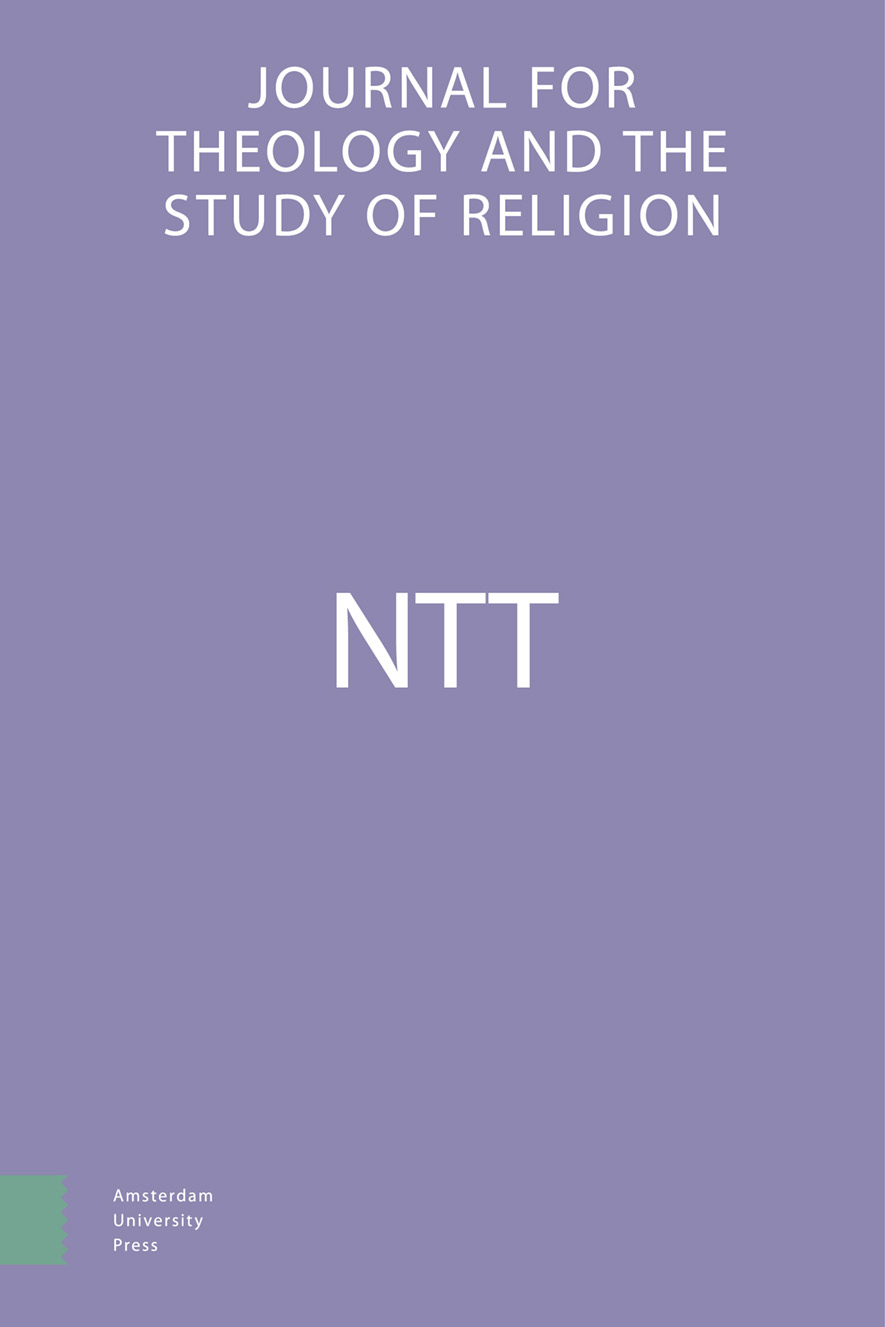- Home
- A-Z Publications
- NTT Journal for Theology and the Study of Religion
- Previous Issues
- Volume 59, Issue 1, 2005
NTT Journal for Theology and the Study of Religion - Volume 59, Issue 1, 2005
Volume 59, Issue 1, 2005
Language:
Dutch
-
-
oa [Spiritual Healing: The Vitality of Religious Practices in the Netherlands Since 1850, Geestige praktijken: Over de vitaliteit van religieuze heelwijzen in Nederland sinds 1850]
More LessThis article examines the development of the popularity of religious healing in the Netherlands since 1850 and the factors that contribute to its continuation. It focuses upon three traditions: devotional healing in Roman Catholicism, charismatic healing in Pentecostalism and energetic healing in Western Esotericism. Till about 1965, the interest in making a pilgrimage to holy places of healing showed a strong increase, while the Read More
-
-
-
oa [The Development of Greek and the New Testament, De ontwikkeling van het Grieks en het Nieuwe Testament: Opmerkingen naar aanleiding van een recente publicatie]
More LessThis review article discusses the recent book by Chris Caragounis on the development of the Greek language in its relevance to the study of the New Testament. Special attention is paid to the elements of continuity and change in pronunciation, semantics and syntax. In spite of the fact that Caragounis overstates his case in some respects, this book undoubtedly throws new light on several problems of NT interpretation.
-
-
-
oa What Is a Christian Apocryphal Text and How Does It Work? Some Observations on Apocryphal Hermeneutics
More LessAbstract The new trend in the study of Christian apocryphal texts is to include among them not only the traditional ‘New Testament apocrypha’, but also other texts written later than the first centuries of our era, or clearly reworked in the Middle Ages. Behind this wider choice stands the opinion of Éric Junod and Jean-Claude Picard that there is no temporal limit for the rise of apocryphal texts. Using the evidence provided by som Read More
-
-
-
oa [The Jewish background of the Prayer in Aphrahat’s Demonstrationes 23.53-59, De joodse achtergrond van het gebed in Aphrahats Demonstrationes 23.53-59]
More LessBy S. JanseThe prayer of the Syrian theologian Aphrahat in Demonstratio 23.53-59 displays at least seven analogies with the Jewish prayer Amidah. Textual analysis suggests that there are more instances of Jewish influence in this prayer. In this study it is considered plausible that Jewish prayers from the period after 70 AD or 135 AD, have found a way into the Christian liturgy of Syriac-speaking Persia through Jewish proselytes. It is pr Read More
-
Volumes & issues
-
Volume 79 (2025)
-
Volume 78 (2024)
-
Volume 77 (2023)
-
Volume 76 (2022)
-
Volume 75 (2021)
-
Volume 74 (2020)
-
Volume 73 (2019)
-
Volume 72 (2018)
-
Volume 71 (2017)
-
Volume 70 (2016)
-
Volume 69 (2015)
-
Volume 68 (2014)
-
Volume 67 (2013)
-
Volume 66 (2012)
-
Volume 65 (2011)
-
Volume 64 (2010)
-
Volume 63 (2009)
-
Volume 62 (2008)
-
Volume 61 (2007)
-
Volume 60 (2006)
-
Volume 59 (2005)
-
Volume 58 (2004)
-
Volume 57 (2003)
-
Volume 56 (2002)
-
Volume 55 (2001)
-
Volume 54 (2000)
-
Volume 53 (1999)
-
Volume 52 (1998)
-
Volume 51 (1997)
-
Volume 50 (1996)
-
Volume 49 (1995)
-
Volume 48 (1994)
-
Volume 47 (1993)
-
Volume 46 (1992)
-
Volume 45 (1991)
-
Volume 44 (1990)
-
Volume 43 (1989)
-
Volume 42 (1988)
-
Volume 41 (1987)
-
Volume 40 (1986)
-
Volume 39 (1985)
-
Volume 38 (1984)
-
Volume 37 (1983)
-
Volume 36 (1982)
-
Volume 35 (1981)
-
Volume 34 (1980)
Most Read This Month
Article
content/journals/25426583
Journal
10
5
false
en

Most Cited Most Cited RSS feed
-
-
oa How to read Philo
By D. T. Runia
-
- More Less

